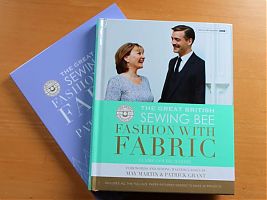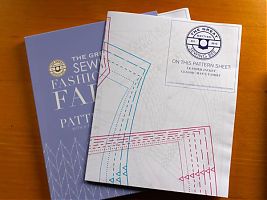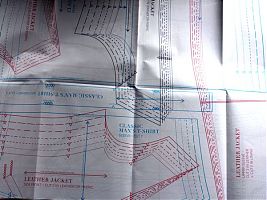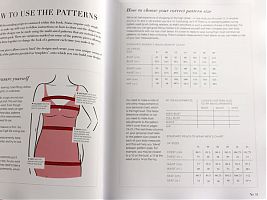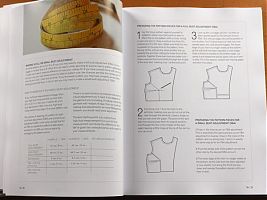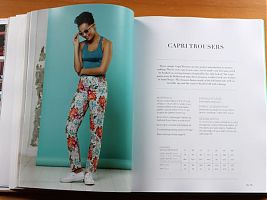Book review: The Great British Sewing Bee: Fashion with Fabric
This is not an unbiased review – if you recall, I worked behind the scenes on the production of the third series of The Great British Sewing Bee tv show, then again on the Children in Need specials (which were actually recorded after the main series, despite airing first), and right after that was done, I started work on the book which accompanies the series, The Great British Sewing Bee: Fashion with Fabric, under the amazing, dedicated, and super talented Claire-Louise Hardie (aka “the thriftystitcher”).
But even though I spent several months as part of the sewing team who developed, adapted, sewed, illustrated, and assisted with the patterns in this book, I have zero financial stake in the sales of this book – I’ve already been paid for my work, regardless if there are zero sales or several million. So this review is unbiased in that regard anyway.
But really, I mostly want to show you all what’s in this book, because a) myself and the team worked really freaking hard to deliver a book chock full of quality patterns, and b) because it really is the perfect book that intermediate/advanced sewists have been craving for a long, long, time. Don’t get me wrong – there are some easy, beginner styles in here, too, but there are loads of projects that are more advanced and have really interesting shapes and design lines.
It should really say something that I spent months of my life sewing up these patterns (both the ones you see as samples in the book, but many, many test versions you don’t see) and I still want to make a ton more. Seriously.
But let’s start with the patterns, shall we?
It’s a great sign that the pattern sheet stack is nearly as thick as the book itself, and each sheet is labelled on the upper right corner so you can see which patterns are printed on that sheet as you flip through the stack. The patterns need to be traced (here’s how I trace a pattern, btw), but they’re colour coded and really nicely spaced out – waaaaaay easier on the eyes than Burda’s pattern sheets, for example, and the sheets themselves are printed on hefty paper, a bit like the old KwikSew patterns. And the sheets aren’t freaking enormous like Vogue’s ones that cover my entire lounge!
Here’s the size chart, which ranges from size 8 (B32.5/W25.5/H36in) to 20 (B45.5/W38.5/H49.5in). Since there are also kids and mens patterns, too, there are (obviously!) different size charts for them. But there are also a few garments in the book which you draft from your own measurements, so if you’re outside the size range you can still make a few things (like Lorna’s curtain skirt from episode three!).
There’s the obligitary section at the start of any sewing book explaining about the supplies you need, how to trace a pattern, sew hand stitches, etc. To be honest, I always just skip past these since I know what I’m doing. But there’s also a section on common fit alterations like an FBA or trouser fitting alterations, too.
But onto the patterns themselves! I haven’t highlighted every single one, but rather pulled out my favourites (or ones where I’ve sewn the sample you see in the book!). For each pattern, you also get a “hack” variation which re-uses the same basic pattern pieces but in a new way to get a totally different look. IMHO, Claire-Louise did a great job in putting new twists on these patterns and showing how you can really make them your own.
In the Cottons section, you get a pattern for capri trousers, which you may recognise from the first episode!

